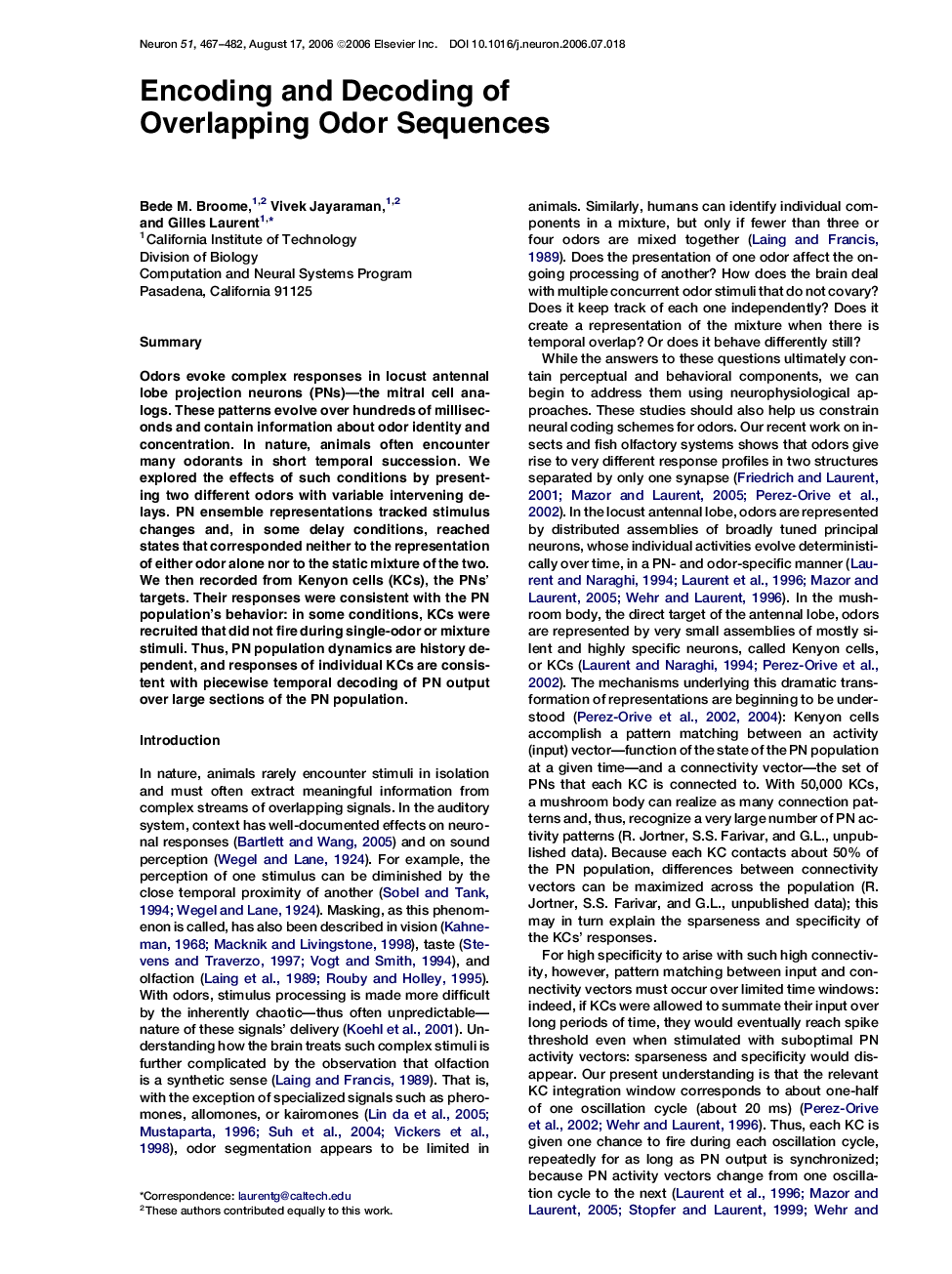| Article ID | Journal | Published Year | Pages | File Type |
|---|---|---|---|---|
| 4322953 | Neuron | 2006 | 16 Pages |
SummaryOdors evoke complex responses in locust antennal lobe projection neurons (PNs)—the mitral cell analogs. These patterns evolve over hundreds of milliseconds and contain information about odor identity and concentration. In nature, animals often encounter many odorants in short temporal succession. We explored the effects of such conditions by presenting two different odors with variable intervening delays. PN ensemble representations tracked stimulus changes and, in some delay conditions, reached states that corresponded neither to the representation of either odor alone nor to the static mixture of the two. We then recorded from Kenyon cells (KCs), the PNs' targets. Their responses were consistent with the PN population's behavior: in some conditions, KCs were recruited that did not fire during single-odor or mixture stimuli. Thus, PN population dynamics are history dependent, and responses of individual KCs are consistent with piecewise temporal decoding of PN output over large sections of the PN population.
